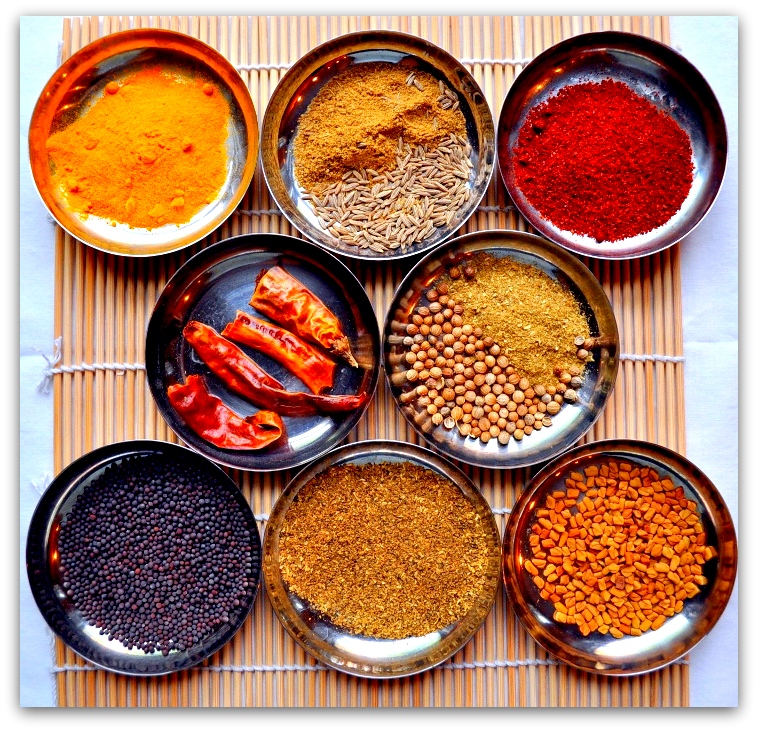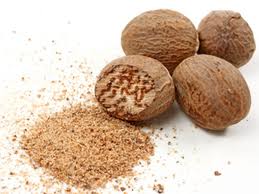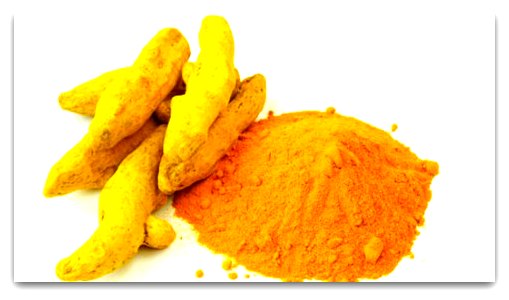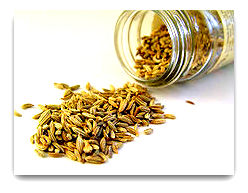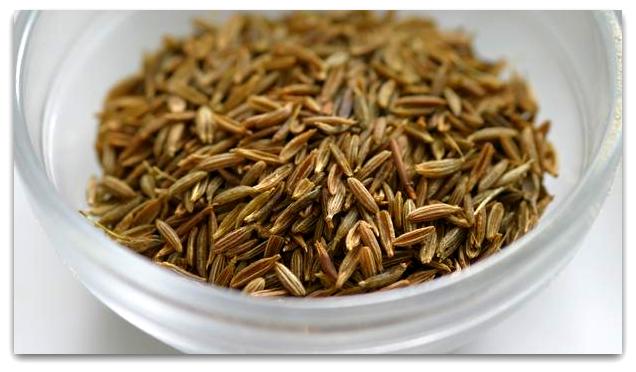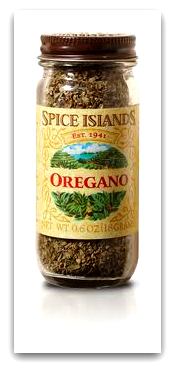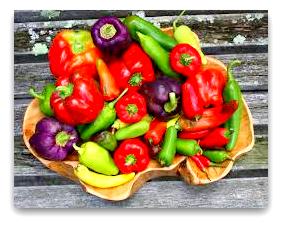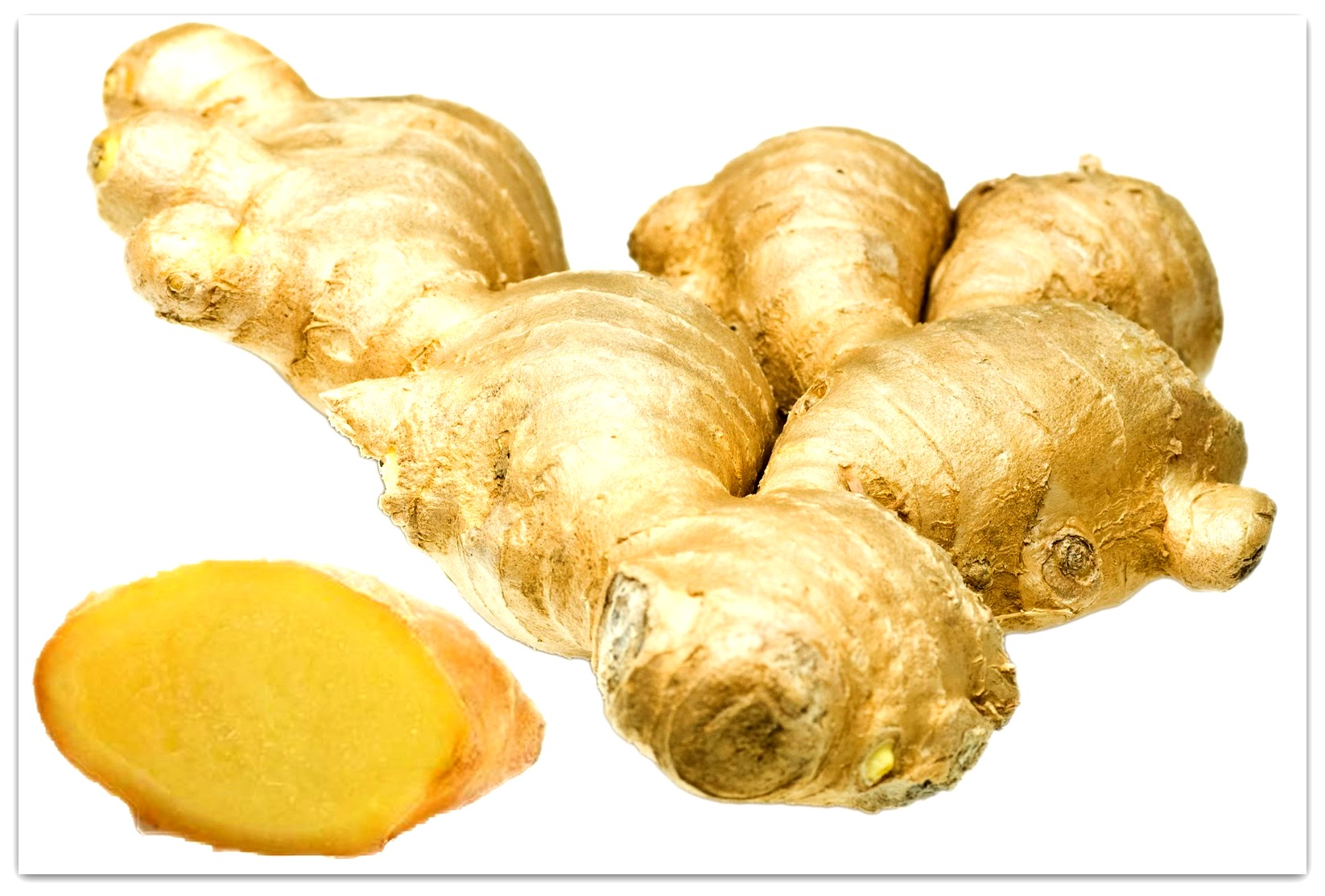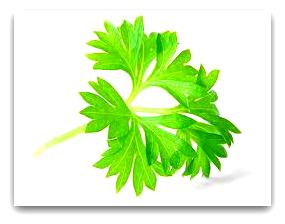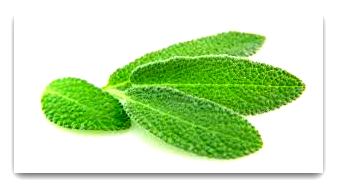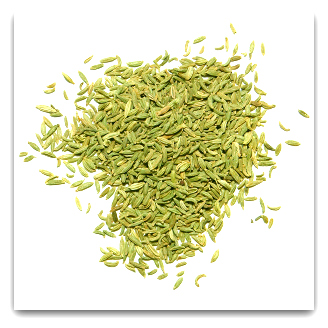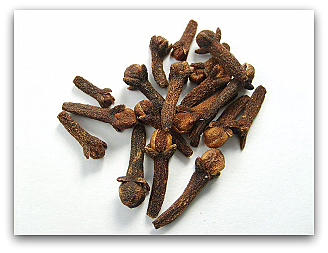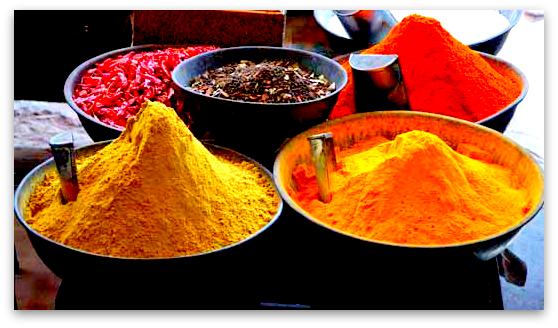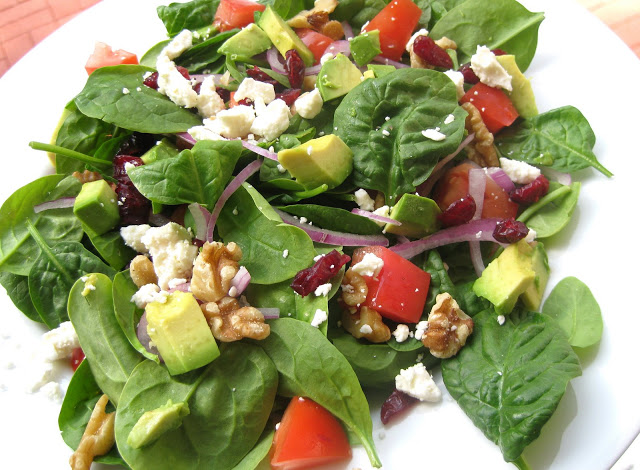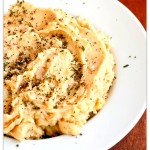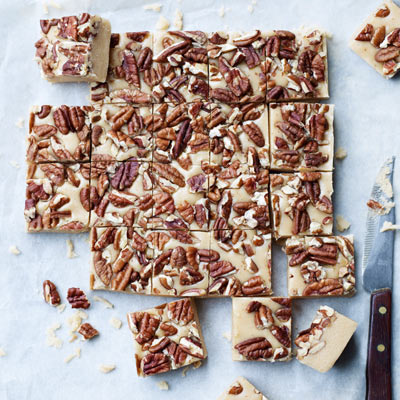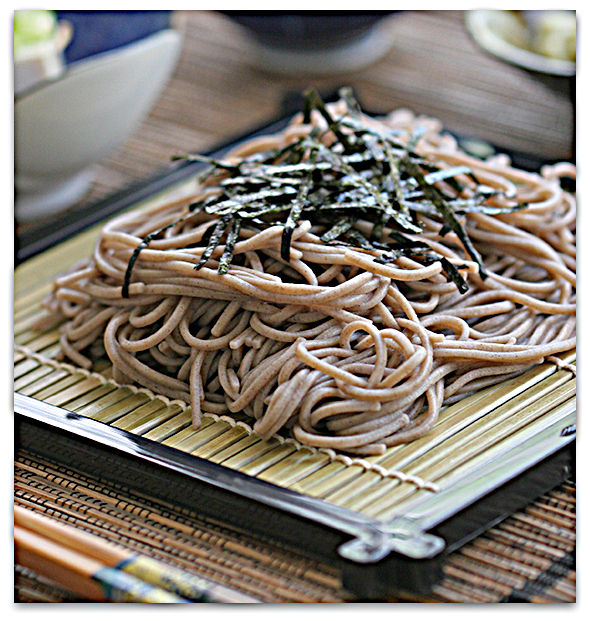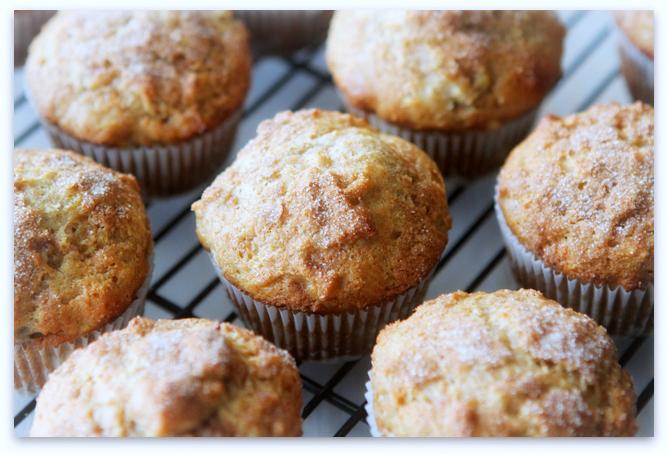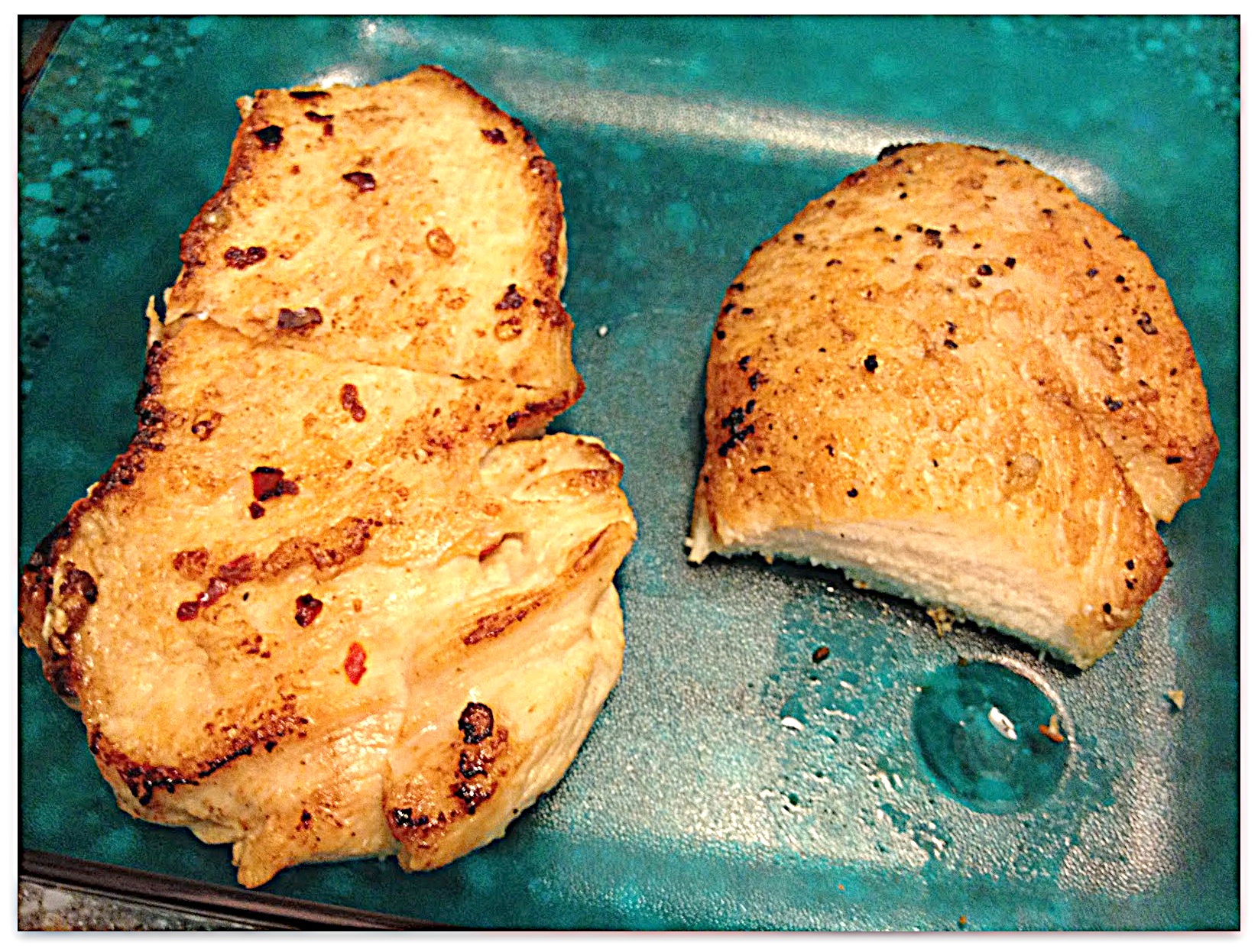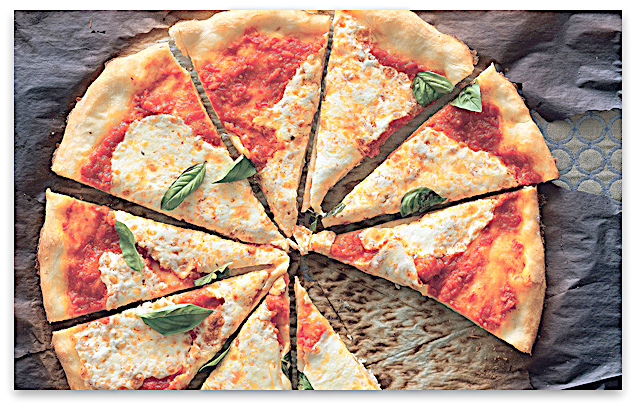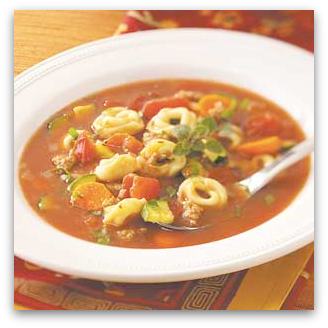Our grandmothers would in no time prepare us a glass of warm milk with saffron sprinkled on top when we went crying to her with bruise on our knee or wound on the elbow. The herbal turmeric paste soothed minor cuts and healed all skin rashes. These age-old kitchen tricks are little more than mere quick-fix tactics. Spices like turmeric and saffron are inherent with medicinal properties that, when incorporated to our diet from an early stage strengthens our bodies against invasion of toxins, bacteria and virus.
Nutmeg
Like cloves, nutmeg contains eugenol, a compound that may benefit the heart. It was one of the key spices that give the Spice Islands their name, and some historians link its popularity in the spice trade to the hallucinatory effects that result from ingesting large amounts. The euphoria, which is due to nutmeg’s active ingredient, myristicin, is described as similar to that caused by the drug ecstasy. Don’t worry about your teens raiding your spice drawer for a quick high, however; it also packs some nasty side effects, and nutmeg poisoning is a very real risk.
Medically, nutmeg (the seed of an evergreen tree) and mace (the covering of the seed) have strong antibacterial properties. It’s been found to kill a number of bacteria in the mouth that contribute to cavities. Myristicin has also been shown to inhibit an enzyme in the brain that contributes to Alzheimer’s disease and to improve memory in mice, and researchers are currently studying its potential as an antidepressant.
Mustard
Mustard is made from the seeds of a plant in the cabbage family – a strongly anticancer group of plants. Indeed, mustard seeds contain compounds that studies suggest may inhibit the growth of cancer cells.
Mustard also packs enough heat to break up congestion, the reason it was traditionally used in chest plasters. Like cayenne pepper, it has the ability to deplete nerve cells of substance P, a chemical that transmits pain signals to the brain, when used externally. A mustard compress also brings more blood to the fingers of people with Raynaud’s phenomenon, a circulatory problem that causes frigid fingers.
Mustard is also said to stimulate appetite by increasing the flow of saliva and digestive juices. A bit of mustard powder added to a foot bath helps kill athlete’s foot fungus. Don’t eat too many mustard seeds or more than a teaspoon of mustard powder; the former has a strong laxative effect, while the latter can induce vomiting.
Turmeric/Curcumin:
This is the king of spices when it comes to dealing with cancer diseases, besides it adding a zesty colour to our food on the platter. Turmeric contains the powerful polyphenol Curcumin that has been clinically proven to retard the growth of cancer cells causing prostrate cancer, melanoma, breast cancer, brain tumour, pancreatic cancer and leukemia amongst a host of others. Curcumin promotes ‘Apoptosis’- (programmed cell death/cell suicide) that safely eliminates cancer breeding cells without posing a threat to the development of other healthy cells. In cases of conventional radiotherapy and chemotherapy, the surrounding cells too become a target in addition to the cancer cells. Therefore, the side-effects are imminent.
How to buy turmeric:
Most of the world’s turmeric comes from two places in India: Alleppey and Chennai. I recommend buying turmeric from Alleppey, if possible, since research has shown it contains nearly two times more curcumin than turmeric from Madras. Turmeric is a root, like ginger, but it is very hard to grind. For this reason, it is almost always sold already ground. If possible, buy turmeric in a quantity you will use up in a few months, since it tends to quickly lose its aromatic flavor.
Cooking tips:
Before sauteing vegetables or making stir-fry, heat oil in a pan and sprinkle it with turmeric, stirring for a few seconds so it toasts a bit but doesn’t burn.
Add turmeric to fried onions (one study found that onions and turmeric work together, synergistically, to protect against cancer).
Use turmeric generously in lentil or dal dishes.
Blend it in melted butter and drizzle over cooked vegetables.
Add a teaspoon of turmeric to a large pot of chicken noodle soup.
Add a teaspoon of turmeric to homemade chili.
Eat more yellow mustard, which contains turmeric.
Fennel:
Armed with phyto-nutrients and antioxidants, cancer cells have nothing but to accept defeat when the spice is fennel. ‘Anethole’, a major constituent of fennel resists and restricts the adhesive and invasive activities of cancer cells. It suppresses the enzymatic regulated activities behind cancer cell multiplication. A tomato-fennel soup with garlic or fresh salads with fennel bulbs make for an ideal entree prior to an elaborate course meal. Roasted fennel with parmesan can be another star pick.
Saffron:
A natural carotenoid dicarboxylic acid called ‘Crocetin’ is the primary cancer-fighting element that saffron contains. It not only inhibits the progression of the disease but also decreases the size of the tumour by half, guaranteeing a complete goodbye to cancer. Though it is the most expensive spice in the world for it is derived from around 250,000 flower stigmas (saffron crocus) that make just about half a kilo, a few saffron threads come loaded with benefits you won’t regret paying for. Saffron threads can be used in various ways:
Cumin:
Yes, it aids digestion and probably that is why we like chewing a handful of cumin seeds at the end of every meal. However, its health benefits go beyond. A portent herb with anti-oxidant characteristics, cumin seeds contain a compound called ‘Thymoquinone’ that checks proliferation of cells responsible for prostate cancer. So, instead of loading your usual snack options with calories and oil, add this seasoning to your bread, fried beans or sauce and make the dish rich in flavour and high on health. You can rediscover the magic of cumin in your regular bowl of tadka dal and rice too!
Cinnamon:
It takes not more than a half teaspoon of cinnamon powder every day to keep cancer risk away. A natural food preservative, cinnamon is a source of iron and calcium. Useful in reducing tumour growth, it blocks the formation of new vessels in the human body. Some of the effective ways of including cinnamon in your diet are:
-Start your day with a cup of cinnamon tea (in leaf or sachet)
-Make your breakfast meal a super healthy one; just add this wonder spice to your
Morning oatmeal and you are going well!
-A fruity delight comprising chopped apples, a few walnuts and your magic potion cinnamon
-Honey and cinnamon in your glass of milk before going to bed; no cancer nightmares assured!
How to buy cinnamon:
Ground cinnamon begins to fade in flavor after a few months, so it’s best to buy whole cinnamon quills (or sticks) and grind as needed. The quills are somewhat tough, so you’ll need a sturdy spice grinder or fine grater.
If your only option is to buy ground cinnamon, try to find good stuff made from whole quills, as opposed to “featherings” (which are the inner bark of twigs and small shoots that are not large enough to form a full quill) or from “cinnamon chips” (made from shavings and trimmings). When in doubt, buy Ceylon cinnamon, which comes from Sri Lanka and is widely considered to be the best in the world.
Cooking tips:
Simmer a whole cinnamon quill in soups or stews.
Sprinkle cinnamon on apples, bananas, melons, and oranges.
Combine equal parts cinnamon, cardamom and black pepper, and use as a rub for meats.
Mix cinnamon into rice pilaf.
Make spiced tea: Put a quart of brewed tea into a pot, add 2 cups of apple juice, and gently simmer with a sliced lemon and two cinnamon sticks for 10 minutes.
Oregano:
More than a pizza or pasta topping, oregano confirms its worth as a potential agent against prostate cancer. Consisting of anti-microbial compounds, just one teaspoon of oregano has the power of two cups of red grapes! Phyto-chemical ‘Quercetin’ present in oregano restricts growth of malignant cells in the body and acts like a drug against cancer-centric diseases.
Cayenne Pepper/Capsaicin (Chilli peppers):
A promising spice with anti-cancer properties, an overdose of chilli peppers however should be restrained. Capsaicin induces the process of apoptosis that destroys potential cancer cells and reduces the size of leukemia tumour cells considerably. It can be concluded that apart from setting our tongues on fire, chilli peppers can scare cancer pathogens off too.
Chile Peppers
May help: Boost metabolism.
Chile peppers add a much-appreciated heat to chilly-weather dishes, and they can also give a boost to your metabolism. Thank capsaicin, the compound that gives fresh chiles, and spices including cayenne and chipotle, their kick. Studies show that capsaicin can increase the body’s metabolic rate (causing one to burn more calories) and may stimulate brain chemicals that help us feel less hungry. In fact, one study found that people ate 16 percent fewer calories at a meal if they’d sipped a hot-pepper-spiked tomato juice (vs. plain tomato juice) half an hour earlier. Recent research found that capsinoids, similar but gentler chemicals found in milder chile hybrids, have the same effects-so even tamer sweet paprika packs a healthy punch. Capsaicin may also lower risk of ulcers by boosting the ability of stomach cells to resist infection by ulcer-causing bacteria and help the heart by keeping “bad” LDL cholesterol from turning into a more lethal, artery-clogging form. Ginger: This humble spice boasts of medicinal qualities that help lowering cholesterol, boost metabolism and kill cancer cells. Easily added to vegetable dishes, fish preparations and salads, ginger enhances the flavour in cooking. Chew on fresh parsley if the odour bothers you.
Others: Cloves, anise, basil, garlic, caraway, fenugreek, mustard, mint leaves, rosemary, Limonin (fresh lemon), virgin olive, vinegar and avocado are other cancer-fighting diet components.
1. A plant-based diet with a variety of fruits, vegetables, nuts, grains and beans is the best organic way to fight cancer.
2. Add fibre: Replace white rice with brown rice in meals
3. Substitute whole-grain bread for white bread; choose a bran muffin over a pastry
4. Snack on popcorn instead of potato chips.
5. Eat fresh fruits with skin.
6. Omega-3 fatty acids fight inflammation.
7. Cook with olive oil instead of regular vegetable oil
8. Avoid packaged or fried foods that are high in trans-fats
9. Avoid processed salt. Celtic sea salt/Himalayan salt can be consumed sparingly.
10. Cancer patients: Do not load your diet with turmeric or Curcumin supplements without doctor’s consult or prescribed dosage.
Cancer fighting salad recipe: Couscous salad with sun dried tomato
Ingredients:
Couscous Wheat- 120 gms
Turmeric – 1 gm
Salt/pepper To Taste
Sun dried tomato- 2 nos
Olives (black/Green) – 2 nos each
Mint leaves- 2 sprig
Lemon juice
Ginger dices
Bell pepper dices- 15 gm
Olive oil- 2 Tsp
Saffron
Pickle onion- 2 nos
Lettuce leaves
Method:
1. Take a pan and add salt, pepper, turmeric, couscous, olive oil and saffron. Steam the couscous for 5 minutes and chill immediately.
2. Now add lemon juice, bell pepper, olives, sun dried tomato, pickle onion (chopped) and dice ginger. Mix well and add mint. Mould it on top of lettuce leaves and serve chilled.
Ginger:
This humble spice boasts of medicinal qualities that help lowering cholesterol, boost metabolism and kill cancer cells. Easily added to vegetable dishes, fish preparations and salads, ginger enhances the flavour in cooking. Chew on fresh parsley if the odour bothers you.
May also help prevent and treat:
Arthritis, asthma, cancer, cholesterol problems, heart attack, heartburn, indigestion, migraine, morning sickness, motion sickness, nausea, stroke, elevated triglycerides.
How to buy ginger:
Opt for fresh gingerroot over the dried, ground stuff, which has a less enticing aroma and far less zip. When buying fresh gingerroot, look for knobs (called “hands”) that are firm with smooth skin. Store fresh, peeled ginger in a paper bag in the refrigerator, where it will keep for two weeks. You can also keep unpeeled ginger indefinitely by freezing it in a freezer bag.
Cooking tips:
Grate fresh ginger over cooked tofu, vegetables or soba noodles.
Toss sliced or chopped ginger into stir-fries.
Rub into meat before grilling to help tenderize and add flavor.
Steep a coin-size piece of fresh ginger with your choice of tea.
Sprinkle ground ginger and a little brown sugar on acorn squash or sweet potatoes before baking.
Others: Cloves, anise, basil, garlic, caraway, fenugreek, mustard, mint leaves, rosemary, Limonin (fresh lemon), virgin olive, vinegar and avocado are other cancer-fighting diet components.
1. A plant-based diet with a variety of fruits, vegetables, nuts, grains and beans is the best organic way to fight cancer.
2. Add fibre: Replace white rice with brown rice in meals
3. Substitute whole-grain bread for white bread; choose a bran muffin over a pastry
4. Snack on popcorn instead of potato chips.
5. Eat fresh fruits with skin.
6. Omega-3 fatty acids fight inflammation.
7. Cook with olive oil instead of regular vegetable oil
8. Avoid packaged or fried foods that are high in trans-fats
9. Avoid processed salt. Celtic sea salt/Himalayan salt can be consumed sparingly.
10. Cancer patients: Do not load your diet with turmeric or Curcumin supplements without doctor’s consult or prescribed dosage.
Cancer fighting salad recipe: Couscous salad with sun dried tomato
Ingredients:
Couscous Wheat- 120 gms
Turmeric – 1 gm
Salt/pepper To Taste
Sun dried tomato- 2 nos
Olives (black/Green) – 2 nos each
Mint leaves- 2 sprig
Lemon juice
Ginger dices
Bell pepper dices- 15 gm
Olive oil- 2 Tsp
Saffron
Pickle onion- 2 nos
Lettuce leaves
Method:
1. Take a pan and add salt, pepper, turmeric, couscous, olive oil and saffron. Steam the couscous for 5 minutes and chill immediately.
2. Now add lemon juice, bell pepper, olives, sun dried tomato, pickle onion (chopped) and dice ginger. Mix well and add mint. Mould it on top of lettuce leaves and serve chilled.
Parsley
May help: Inhibit breast cancer-cell growth.
University of Missouri scientists found that this herb can actually inhibit breast cancer-cell growth, reported Holly Pevzner in the September/October 2011 issue of EatingWell Magazine. In the study, animals that were given apigenin, a compound abundant in parsley (and in celery), boosted their resistance to developing cancerous tumors. Experts recommend adding a couple pinches of minced fresh parsley to your dishes daily.
Sage
May help: Preserve memory, soothe sore throats.
Herbalists recommend sipping sage tea for upset stomachs and sore throats, a remedy supported by one study that found spraying sore throats with a sage solution gave effective pain relief. And preliminary research suggests the herb may improve some symptoms of early Alzheimer’s disease by preventing a key enzyme from destroying acetylcholine, a brain chemical involved in memory and learning. In another study, college students who took sage extracts in capsule form performed significantly better on memory tests, and their moods improved.
Rosemary
May help: Enhance mental focus, fight foodborne bacteria.
One recent study found that people performed better on memory and alertness tests when mists of aromatic rosemary oil were piped into their study cubicles. Rosemary is often used in marinades for meats and poultry, and there’s scientific wisdom behind that tradition: rosmarinic acid and other antioxidant compounds in the herb fight bacteria and prevent meat from spoiling, and may even make cooked meats healthier. In March 2010, Kansas State University researchers reported that adding rosemary extracts to ground beef helped prevent the formation of heterocyclic amines (HCAs)-cancer-causing compounds produced when meats are grilled, broiled or fried.
Coriander
Health Benefits: Eases Digestive Discomfort
People often confuse coriander with cilantro, because they come from the same plant. But there’s a big difference. Cilantro, an herb, comes from the strongly scented leaves of the coriander plant. And while it is tasty, it’s not nearly as healthful as the spice coriander, which comes from the plant’s sweet, nutty seeds. Two of the volatile oils contained in coriander seed (linalool and geranyl acetate) are powerful, cell-protecting antioxidants. They’re probably behind many of coriander’s curative powers, including its ability to soothe digestive ailments.
In a study reported in Digestive Diseases and Sciences, gastroenterologists studied 32 people with irritable bowel syndrome (IBS), a chronic digestive complaint that afflicts 10 to 20 percent of Americans. It includes symptoms such as abdominal pain, cramping and bloating, along with diarrhea and constipation. The researchers divided the subjects up into two groups: One group received a preparation containing coriander; the other received a placebo. After eight weeks, those taking the coriander preparation had three times more improvement in abdominal pain and discomfort than the placebo group.
Why? Researchers have found that coriander works like an antispasmodic drug, relaxing the contracted digestive muscles that cause the discomfort of IBS and other “overactive gut” disorders. That same relaxing effect — working on arteries — may be one reason why the spice can help lower blood pressure, researchers suggest.
May also help prevent and treat:
Bloating, cholesterol problems, colic, colon cancer, type 2 diabetes, diarrhea, eczema, flatulence, high blood pressure, IBS, indigestion, insomnia, lead poisoning, liver disease, psoriasis, rosacea, stomachache, ulcer, vaginal yeast infection.
How to buy coriander:
Coriander seeds come in two main varieties: European coriander — which accounts for the majority of the U.S. market — is spherical in shape and more flavorful because of its higher concentration of volatile oils. Indian coriander is more egg-shaped and contains some oils not found in European coriander, resulting in a more lemony scent. Both are pretty interchangeable in cooking. Coriander is also sold powdered, but it’s best to buy whole seeds, as the oils dissipate after a few months once ground.
Cooking tips:
Mix coriander seeds with peppercorns in your peppermill.
Coarsely grind coriander and rub it into meats or fish before cooking.
Add whole or ground seeds to stews, casseroles, marinades, vinaigrettes and pickled dishes.
Make a classic Moroccan rub: Mix ground coriander with garlic, butter and paprika, and rub it on lamb before roasting.
Fennel Seed
Health Benefits: Calms Menstrual Cramps
Fennel is one of the few plants that has it all — it’s a vegetable, herb and spice. That tang of licorice when you bite into a fennel seed comes from the volatile oil anethole, the same compound that gives anise its licorice-like flavor. Fennel seeds are teeming with anethole and dozens of other phytochemicals, including phytoestrogens, estrogen-like compounds found in plants. These can help offset menstrual cramps that affect more than 50 percent of menstruating women.
In a study reported in the International Journal of Gynecology and Obstetrics, doctors treated 30 women with moderate to severe menstrual cramps, using either an extract of fennel or a nonsteroidal anti-inflammatory drug (NSAID) similar to ibuprofen. Both the drug and fennel effectively relieved menstrual pain. In a similar study, involving 110 women, fennel outperformed the NSAID.
Fennel has also been shown to calm colic in babies. In a study, doctors treated 125 infants with colic, dividing them into one group that received a product containing fennel seed oil and one that received a placebo. The fennel seed product eliminated colic in 65 percent of the babies given it, compared with 24 percent of the placebo group.
May also help prevent and treat:
Alzheimer’s, arthritis, cancer, colitis (inflammatory bowel disease), dementia, glaucoma, heart disease, high blood pressure, hirsutism (unwanted hair growth in women), stroke.
How to buy fennel seed:
Fennel seeds are sold whole or ground. Whole fennel seeds are yellow and tinged with green, which indicates top quality. Ground fennel starts to lose its flavor after six months, while whole fennel seeds keep for three years, so it’s best to buy whole and grind as needed.
Most of the fennel seed sold in grocery stores is imported from Egypt. If you shop in an Indian market, you may come across Lucknow fennel seeds, which are about half the size of regular fennel seeds. They’re mostly green and have a sweeter flavor — in India, they are eaten as an after-dinner digestif.
Cooking tips:
Dry and crush toasted fennel seeds and steep them in tea.
Fennel seed naturally complements many foods from the Mediterranean diet, including tomatoes, olives, olive oil, basil, grilled meat and seafood.
Throw in extra fennel seeds the next time you make a sausage ragu.
Add fennel seeds to fruit salads and compotes.
Add ground fennel to scrambled eggs.
Make spiced olives by marinating 2 cups olives in ½ cup extra-virgin olive oil and 1 teaspoon each of fennel seeds, dried oregano and dried thyme.
Cloves:
Contain a purifying property that helps support the immune system. Relieves tooth aches, boosts the metabolism, removes toxins from the blood stream, helps prevent the formation of blood clots, regulates blood sugar levels, and contains high levels of calcium, vitamin K and You might not guess, but cloves are higher than any other food in antioxidant content. They provide an excellent source of calcium, omega 3, and vitamin K.
Indian spices not only provide vibrant flavours, but also can add substantial health benefits to our diet. Turmeric and garam masala are two Indian spices my mom and I use in almost every Indian dish. They’re multi-purpose spices that help promote health in almost all aspects of our body. So the next time you cook, add some extra kick to your recipes with these health promoting Indian spices!





